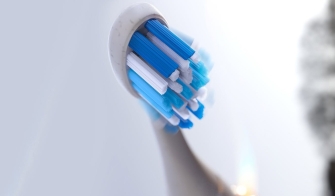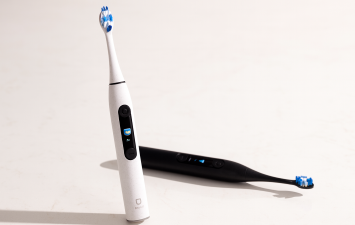Back
Electric Toothbrush ModesSep 2
Sep 2
Electric toothbrush modes often confuse new users. Modern smart brushes don’t just turn on and off—they come with specialized settings for different needs. From sensitive brushing to whitening and gum care, each mode is designed for a specific purpose. This guide explains the most common toothbrush modes, when to use them, and how smart designs like BrushO help make brushing more personalized and effective.

Why Modes Matter in Oral Care
Every mouth is unique. Some people struggle with sensitivity, others worry about stains, and many want healthier gums. Having multiple modes allows you to adjust intensity and motion to match your condition—preventing damage, improving results, and making brushing more enjoyable.
Common Electric Toothbrush Modes
1. Daily Clean 🪥
- What it does: Standard brushing power for plaque removal.
- When to use: Morning and night, twice daily.
- Why it matters: A consistent baseline for everyday oral hygiene.
2. Sensitive Mode 🌿
- What it does: Lower vibrations and gentler pressure.
- When to use: If gums bleed easily, enamel is thin, or brushing feels painful.
- Why it matters: Protects vulnerable teeth and gums without sacrificing cleanliness.
3. Whitening ✨
- What it does: Higher-speed pulses that polish away surface stains.
- When to use: After coffee, tea, or wine; for cosmetic improvement.
- Why it matters: Helps reduce discoloration over time, though not a replacement for professional whitening.
4. Gum Care 💗
- What it does: Massage-like movements that stimulate circulation
- When to use: If you’re prone to gingivitis or want healthier gums.
- Why it matters: Encourages gum health, reduces inflammation, and supports overall oral wellness.
5. Polish 🌟
- What it does: Short bursts of high intensity to smooth tooth surfaces.
- When to use: Before social events or as a touch-up.
- Why it matters: Gives teeth a shinier finish and enhances brightness.
6. Deep Clean 🔬
- What it does: Extended brushing cycles with extra oscillation power.
- When to use: After meals, or when plaque buildup feels heavy.
- Why it matters: Provides thorough cleaning for hard-to-reach areas.
Choosing the Right Mode: Practical Tips
- Sensitive teeth? Stick with Gentle or Sensitive mode.
- Heavy coffee or tea drinker? Add Whitening mode a few times weekly.
- Early gum issues? Try Gum Care mode for daily stimulation.
- Preparing for a big day? Polish mode can add extra shine.
Not every mode needs to be used daily—the goal is personalization, not complication.
How BrushO Makes It Easier 💡
While toothbrush brands vary in available modes, BrushO emphasizes user-friendly design and customization:
- Multiple brushing modes that adapt to different needs.
- AI-powered guidance to suggest which mode suits your brushing pattern.
- Replaceable brush heads included in every kit, making shared use practical while staying hygienic.
- Long battery life (6 hours charge = 45 days standby), ensuring consistent brushing without charging stress.
FAQ: Electric Toothbrush Modes
Q1: Do I need to use all the modes?
No. Start with Daily Clean and add other modes depending on your needs.
Q2: Is whitening mode safe daily?
Yes, but limit usage to a few times per week for best results.
Q3: Which mode is best for braces?
Deep Clean helps reach around brackets and wires more effectively.
Electric toothbrush modes are more than gimmicks—they allow users to customize brushing for specific needs, from sensitivity to whitening.
With intuitive design and smart features, BrushO ensures every user finds the right balance for healthier teeth and gums.
👉 Learn more: Best Electric Toothbrush for First-Time Users
👉 Ready to try smarter brushing? Explore BrushO here: brusho.com
Recent Posts

How to Disinfect Your Toothbrush
Keep your mouth clean by making sure your toothbrush is, too.

Why BrushO Offers Free Brush Heads
BrushO doesn’t just promise free brush heads for life — it rewards you for doing what’s best for your health: brushing daily.

How to Reduce Dental Anxiety and Make Brushing Easier
Dental anxiety isn’t just about visiting the dentist—it can affect your daily oral hygiene, especially brushing. If brushing your teeth feels stressful, overwhelming, or even scary (especially for kids or those with sensory sensitivity), you’re not alone.

How to Master Smart Brushing with AI‑Powered Toothbrushes
Smart toothbrushes are transforming the way we care for our teeth.

How to Maximize Your Toothbrush Battery Life
Wondering why your electric toothbrush battery drains so quickly? Or how to make sure your AI-powered brush like BrushO performs at its best for years?

Are You Overpaying for a Toothbrush?
If your toothbrush costs a small fortune but doesn’t make your teeth feel cleaner, you might be paying more than you should. Here’s how to tell if you’re getting true value — and how to choose smarter.

How to Switch from Manual to Electric Brush
Thinking of switching from a manual to an electric toothbrush?
Does Brushing Longer Mean Cleaner Teeth?
Many people believe that brushing longer automatically means a cleaner mouth—but is that true?
How to Brush Smarter, Not Harder
Brushing your teeth harder doesn’t mean brushing them better. In fact, it might be harming your gums and enamel.

How to Make Your Diet Protect Your Teeth
Maintaining a bright, healthy smile isn’t just about brushing and flossing — your diet plays a huge role in oral health. The foods and drinks you consume every day can either help protect your teeth or contribute to decay and gum disease.
